An Ecco chamber you want to be part of
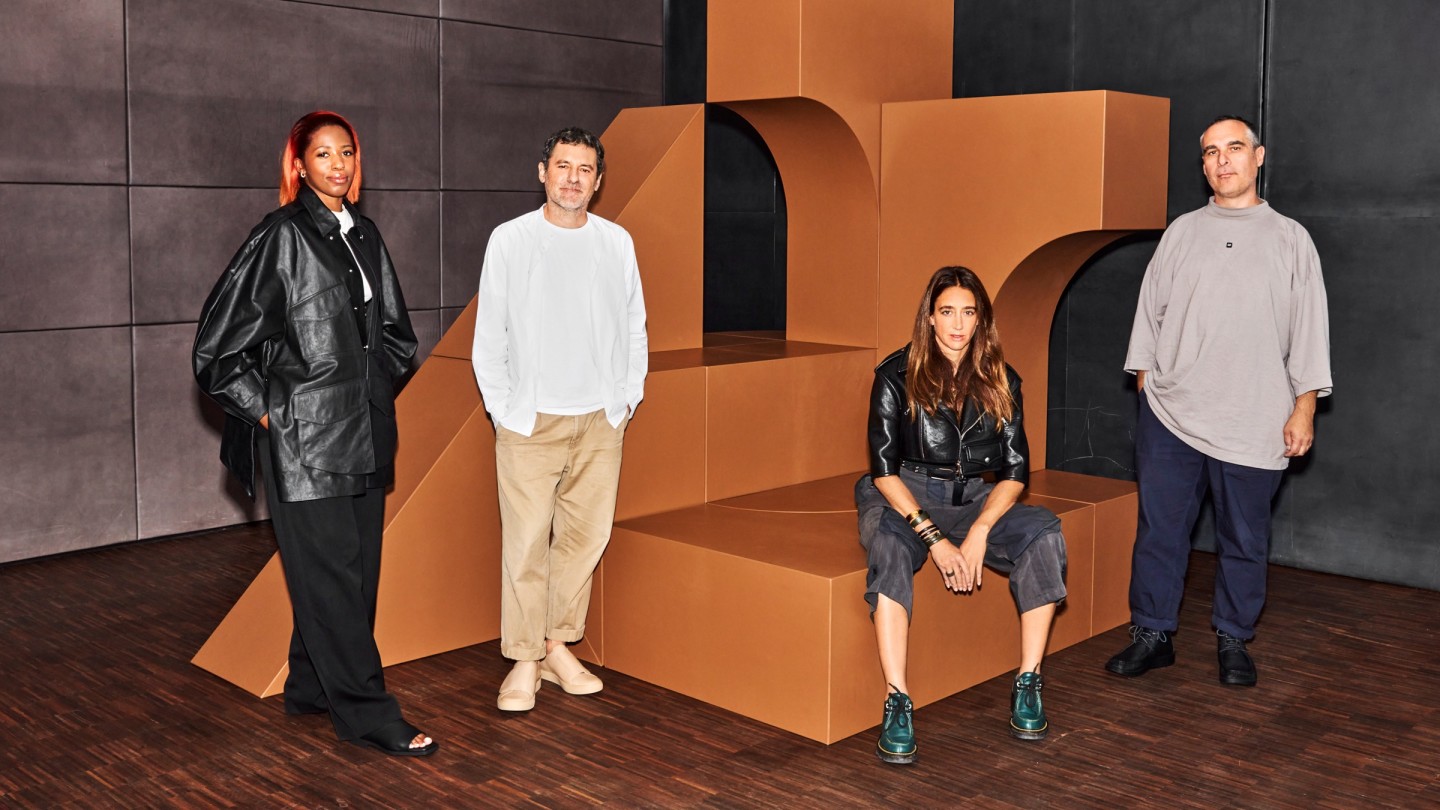
Roula Khalaf, Editor of the FT, selects her favourite stories in this weekly newsletter.
It’s the start of summer and men’s fashion week in Paris, and the streets and boulevards are teeming with stylish types wearing a ribald patchwork of colour and texture. By contrast, in one of the stark but sunlit industrial galleries on the upper floors of Palais de Tokyo, the debut of a new collaborative design project, At.Kollektive, evokes more discreet and considered ideas.
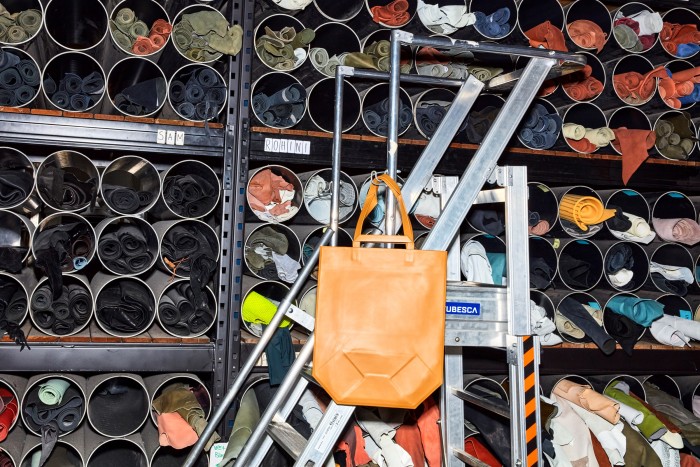
An experiment by Ecco Leather, the tannery and leather supplier behind family-owned Danish brand Ecco Shoes, At.Kollektive assembles a coterie of A-class talent to design small capsule collections that sit outside the trend cycle. The objects and accessories they create, to be delivered monthly from January, use only Ecco’s innovative leather, which has been developed to use less water than traditional tanning methods. “It’s not exactly outside of fashion, but it borders in an interesting way with design because it’s not a one-off thing and it is well thought through and long-lasting,” says the Berlin-based designer Kostas Murkudis, best known for his work with the designer Helmut Lang and one of the four collaborating on this debut.
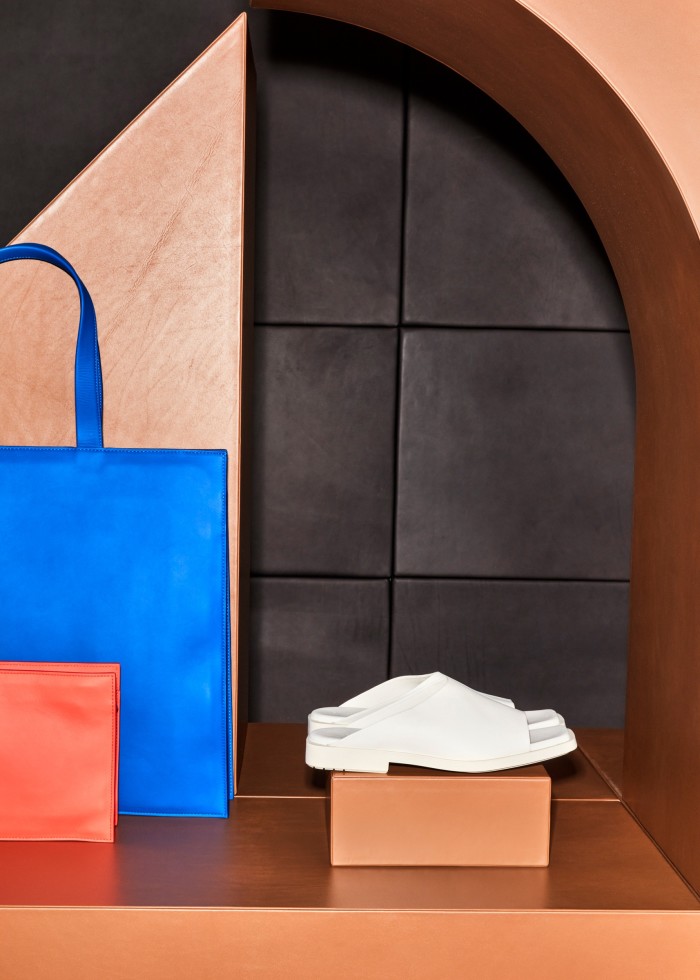
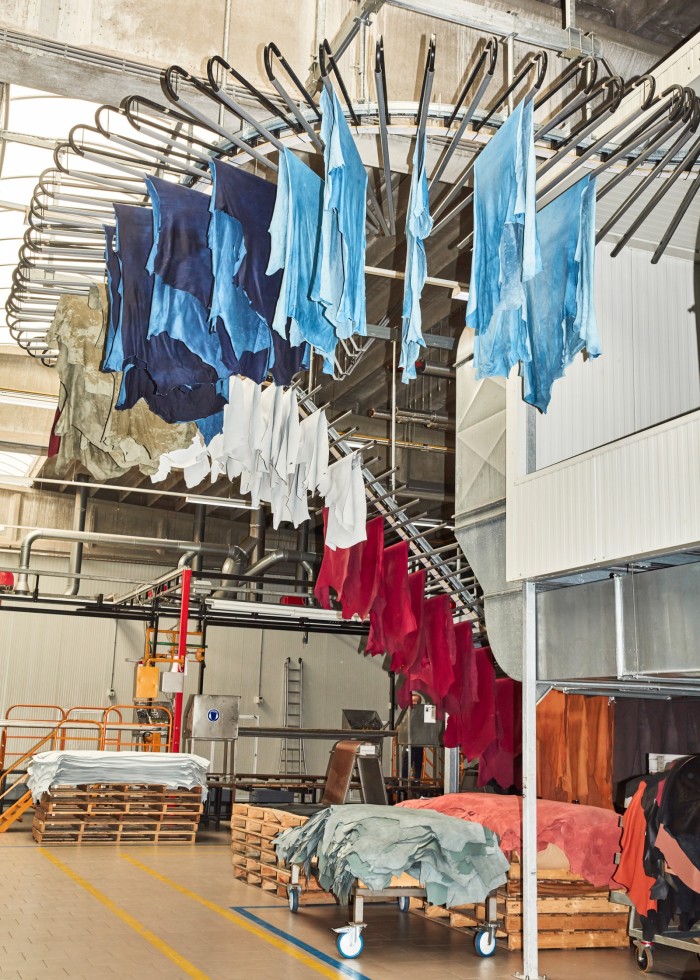
There’s also Natacha Ramsay-Levi, the former creative director of Chloé, Paris-based leather goods designer Isaac Reina, who cut his teeth at Hermès, and menswear designer Bianca Saunders. Each was asked to design a capsule collection with few limitations, save for the material (prices range from £230 to £12,000). “To be told, do whatever you want – I was like, really?” says Ramsay-Levi of her first project since she left Chloé at the end of 2020. “There is no overarching creative direction: we wanted to allow them to interpret in their way, to challenge them to have a different point of view,” explains Ecco CEO Panos Mytaros.
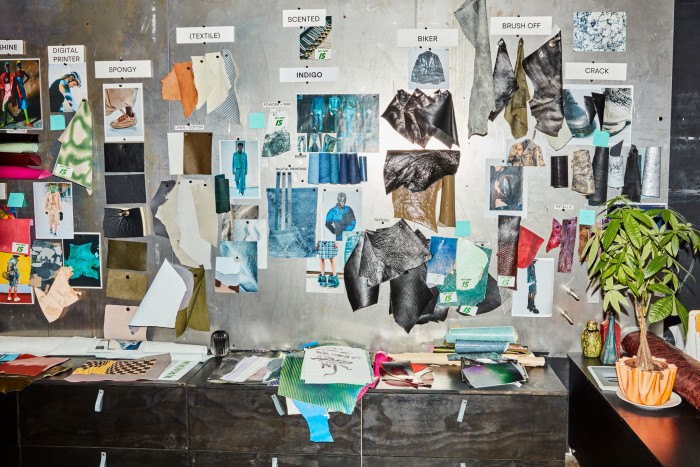
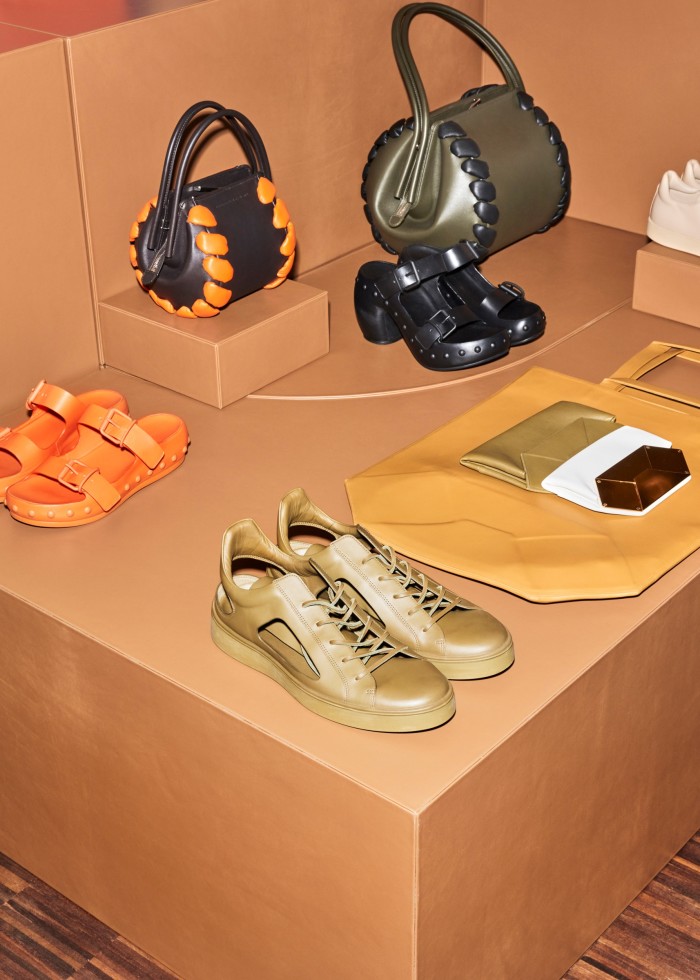
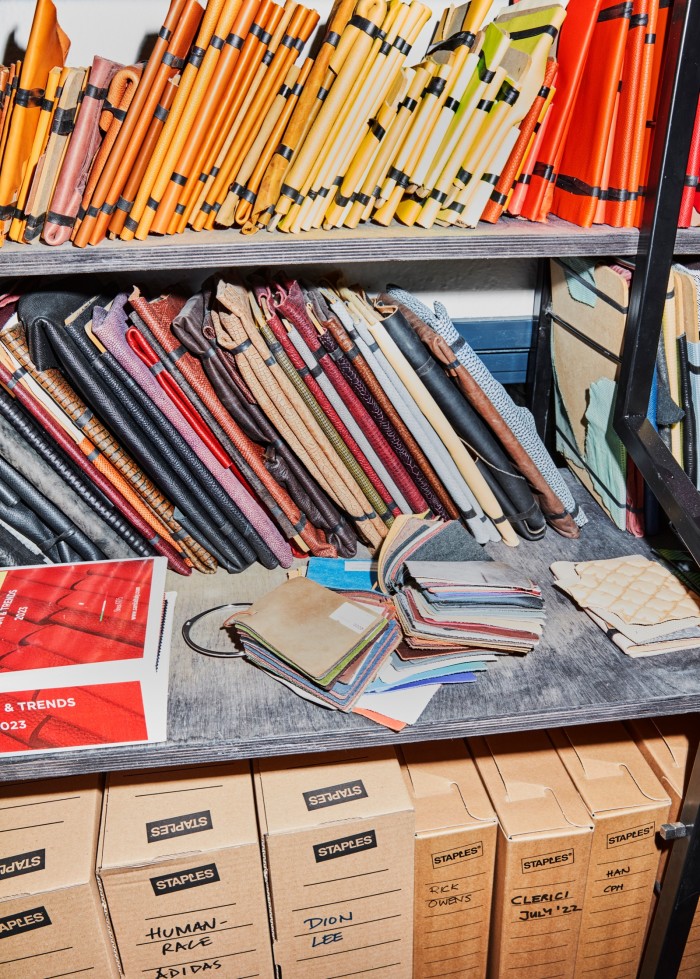
Ramsay-Levi’s output is perhaps the most comprehensive offer, spanning accessories, jewellery, furniture and a selection of ready-to-wear, all in a concise colour palette of bright orange, black and earth tones. The bags stand out: a collection of purses, totes and wallet with extra-large hand-stitching such as tubular braids on the seams, often in contrasting leather, suggesting a sort of pop exaggeration of basketry. There are also chunky sandal-clog hybrids with metallic rivets; an assortment of leather cuff bracelets and earrings; and black, supple leather T-shirt vests and dresses, ideal for layering. “My idea was not to design them to go together, but they do all have the same gesture,” she says.
The project marks the first time Ramsay-Levi has explored furniture design, in the form of a monolithic-style ottoman. Atop a stone base, the square leather cushion looks almost vacuum packed, mimicking a texture like marbled veins. “I am not a furniture designer, so I didn’t want to be too serious,” she says of the style she privately referred to as the Flintstone. “I think the whole collection is a serious proposition, but there is also a humour and clumsiness that I like.”
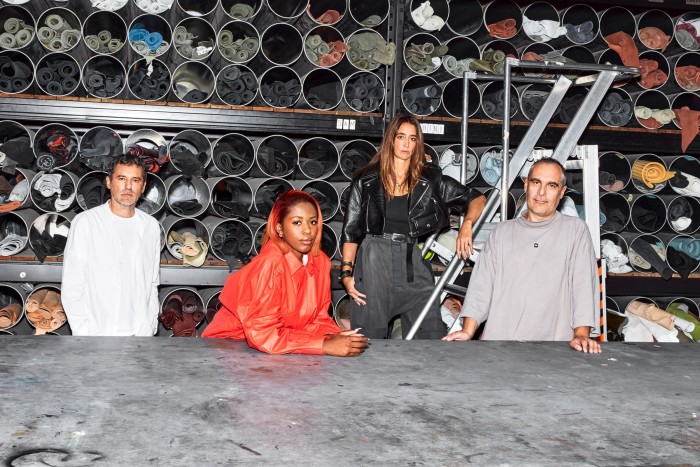
For a designer like Saunders, less established than the rest of her cohort but a finalist of the 2021 LVMH prize and the winner of the ANDAM award that same year, this project offered unparalleled access to the best leathers and manufacturing techniques. “The possibilities are endless and it was quite overwhelming at first,” she says. Her collection stands out for its use of brilliant, pure colours – the Yves Klein blue and salmon pink pop against the neutral tones employed by the others. The collection is also her first official foray into accessories: alongside two shoe styles (from £255), she developed a collection of oversized bags, totes, and pouches, all rectangular and fitted with a wire frame (from £865). Many will appreciate functional details like detachable straps, too.
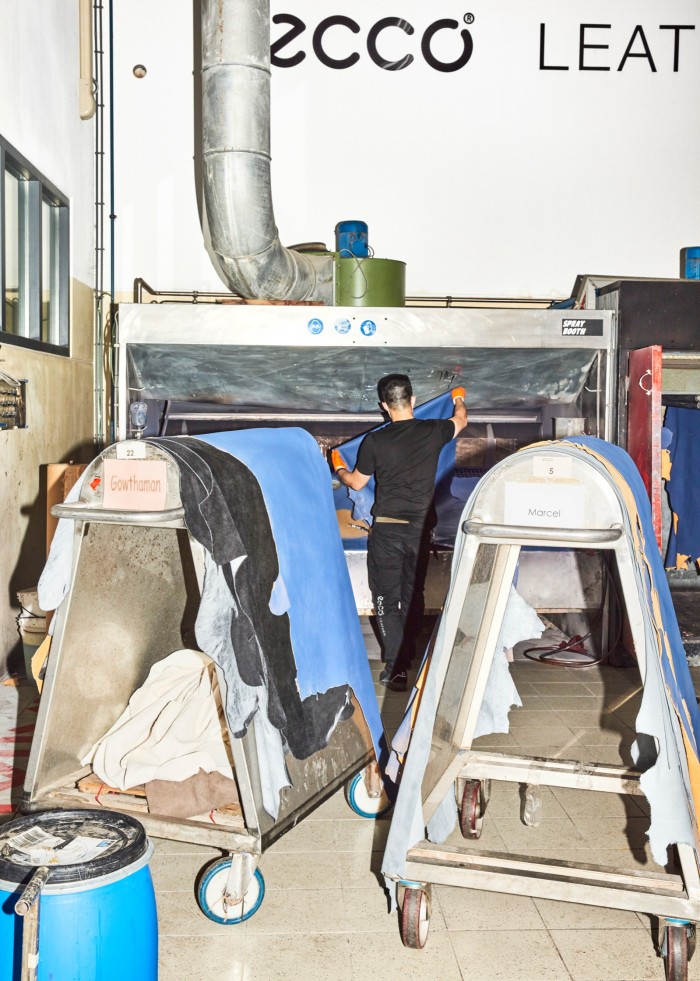
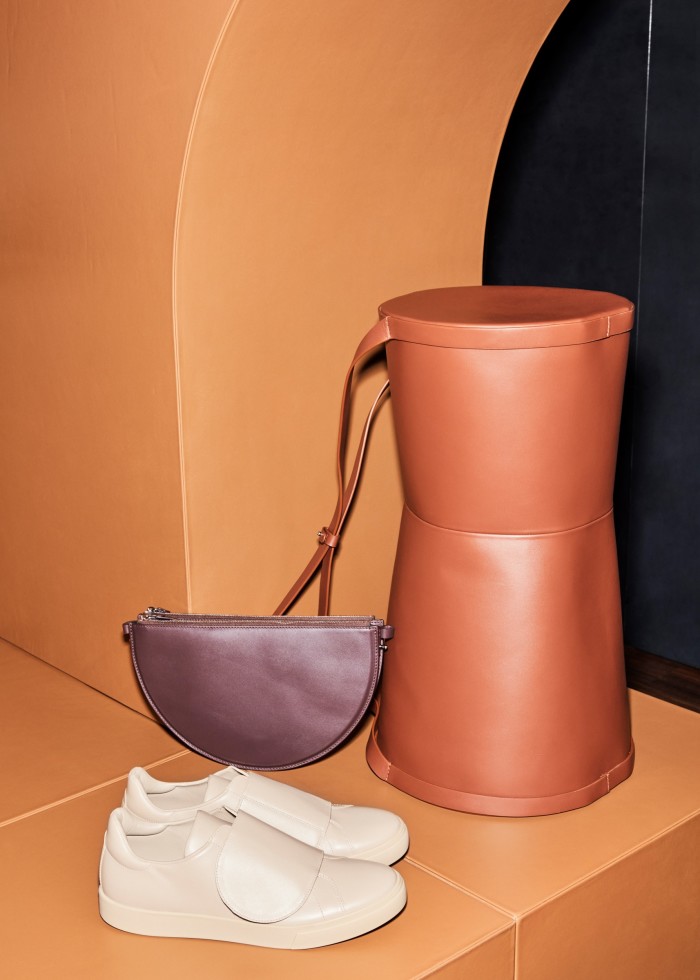
“I was so impressed by the company’s capabilities; they were developing amazing leathers for big luxury brands and not communicating about it,” Murkudis says. For his offer, he developed an array of accessories and objects that riff on the ideas of suprematism, the early iteration of abstract art known for its geometric style. For several trapeze bags and clutches (from £342), he used folds and leather bonded techniques to flatten the 3D forms while maintaining a sense of structure, explaining that he wanted to make the bags look almost like a painting. “I wanted to focus on the technique of this industry, more than the craftsmanship,” he says of the styles he developed. Alongside these bags is a monochromatic cut-out sneaker, a buttery leather trench and motorcycle-style jackets. There is also a leather chaise longue he had made by Paolo Castelli in Italy.
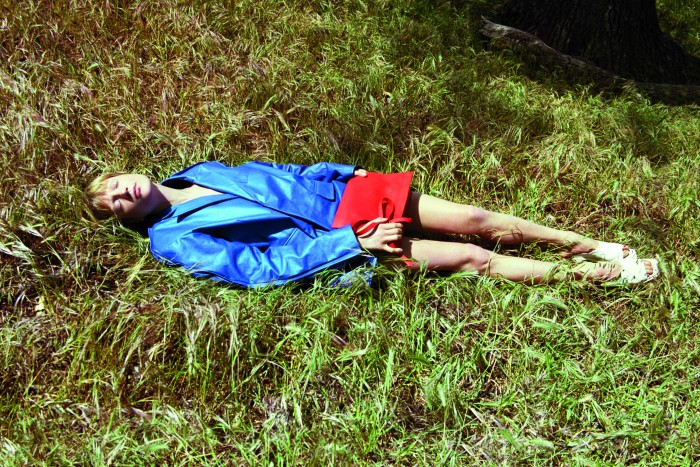
While all the designers worked in relative silos, there is a harmony between the four editions – the leather, of course – but also a studied exploration of form and technique. “It came out much more uniform than you might expect,” adds Mytaros. And yet, their differences are what make it most enticing. They possess a similar minimalist elegance and natural colour palette; where Murkudis’s bags are flattened, Isaac Reina’s (from £1,035) are rounded or tubular, taking inspiration from a cylindrical lamp designed by Le Corbusier. “I was looking at radical geometry and working around the circle to create interesting volumes,” he says of the form he replicated as a lamp, table and stool in smooth nude leather.
Perhaps what unites each object most is the project’s motivation: each will appeal to an individual purely on the merit of its design and superior quality. A subjective coup de coeur, as the French say, that won’t seem outdated the following year. “It’s not about storytelling, it’s about an object that exists on its own, and it becomes yours,” says Ramsay-Levi, who says she has spent the past two years questioning how the industry works. “I felt I needed to reconnect with why I first wanted to work in fashion: which was about making beautiful things and having fun,” she says, adding: “It’s like I manifested this project; it’s exactly the way I want to work.”
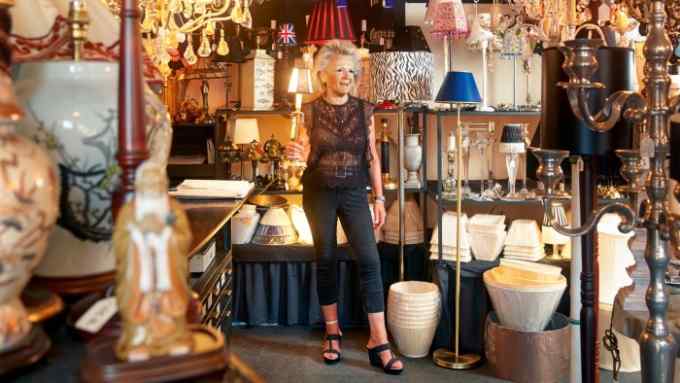
Comments